NYC Railroad History
The New York Central System was a one of the largest American railroads operating in the northeast. Headquartered in New York City, the railroad served most of the Northeast, including extensive routes in New York, Pennsylvania, Ohio, Michigan, Indiana, Illinois and Massachusetts, plus additional routes in the Canadian provinces of Ontario and Québec. The origins of the NYC can be traced back to 1826 and the Mohawk & Hudson Railroad. In 1853, Erastus Corning merged 10 railroads across New York State to form the New York Central railroad between Albany and Buffalo. The Vanderbilt era began in 1867 with the merger of his Hudson River Railroad with the NYC. Also in 1869 Vanderbilt acquired the Lake Shore & Michigan Southern, which ran from Buffalo along the southern shore of Lake Erie through Cleveland, Toledo, and South Bend to Chicago. While operated as separate companies, the NYC&HR and LS&MS gave the Commodore a high-speed water level route under one management providing through service between New York City and Chicago. The New York Central & Hudson River and the Lake Shore & Michigan Southern were merged in 1914 to form the New York Central Railroad Company. Several leased and affiliated lines made up the core of the New York Central System, including:
- Lake Shore & Michigan Southern
- Michigan Central
- Boston & Albany
- Big Four Route (CCC&StL)
- Pittsburgh & Lake Erie
- Toledo & Ohio Central
- Toronto, Hamilton & Buffalo (part ownership with CP
- Monongahela Railway (part ownership with PRR and B&O)
- Peoria & Eastern
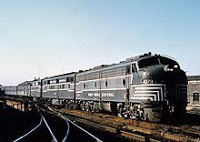 At one time, the NYC also controlled the Rutland and the Nickel Plate Road, but was forced to divest of these properties due to anti-trust concerns. The rest of the subsidiaries and leased lines continued to be operated as the New York Central System, though “local” names persisted for many generations. A man in Detroit would tell you he worked for the Michigan Central, for instance.
At one time, the NYC also controlled the Rutland and the Nickel Plate Road, but was forced to divest of these properties due to anti-trust concerns. The rest of the subsidiaries and leased lines continued to be operated as the New York Central System, though “local” names persisted for many generations. A man in Detroit would tell you he worked for the Michigan Central, for instance.
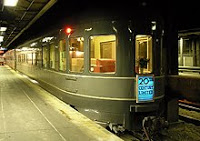 The flagship operation of the NYC was the luxurious first-classTwentieth Century Limited, operated on a crack 16-hour schedule between New York’s Grand Central Terminal and Chicago’s LaSalle Street Station. It was one of America’s premiere passenger services, and the subject of pop culture lore. The service was started in 1902, and came to an end in 1967 as a victim of corporate belt-tightening.
The flagship operation of the NYC was the luxurious first-classTwentieth Century Limited, operated on a crack 16-hour schedule between New York’s Grand Central Terminal and Chicago’s LaSalle Street Station. It was one of America’s premiere passenger services, and the subject of pop culture lore. The service was started in 1902, and came to an end in 1967 as a victim of corporate belt-tightening.
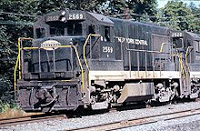 As a result of shifting traffic patterns to trucks and Federally-funded interstate highways and a rapid decline in passenger traffic due to the advent of commercial jet travel, American railroads suffered from reduced revenue. More so in the industrialized northeast, where factories were closing and relocating to the south to take advantage of cheaper labor. On February 1, 1968, NYC merged with its chief competitor, the Pennsylvania Railroad to form the ill-fated Penn Central. A year later, the new company was forced to absorb the ailing New York, New Haven & Hartford. The cost savings from eliminating duplicate facilities and workers never happened, and Penn Central declared bankruptcy in 1970. A massive bailout came from the Federal government in 1976 in the form of Conrail, who took over the operation of the majority of the former PC system, along with five other bankrupt northeastern railroads. Today, much of the former NYC is operated by CSX Transportation and Norfolk Southern.
As a result of shifting traffic patterns to trucks and Federally-funded interstate highways and a rapid decline in passenger traffic due to the advent of commercial jet travel, American railroads suffered from reduced revenue. More so in the industrialized northeast, where factories were closing and relocating to the south to take advantage of cheaper labor. On February 1, 1968, NYC merged with its chief competitor, the Pennsylvania Railroad to form the ill-fated Penn Central. A year later, the new company was forced to absorb the ailing New York, New Haven & Hartford. The cost savings from eliminating duplicate facilities and workers never happened, and Penn Central declared bankruptcy in 1970. A massive bailout came from the Federal government in 1976 in the form of Conrail, who took over the operation of the majority of the former PC system, along with five other bankrupt northeastern railroads. Today, much of the former NYC is operated by CSX Transportation and Norfolk Southern.
- Lake Shore & Michigan Southern
- Pittsburgh & Lake Erie
- Toledo & Ohio Central
- Toronto, Hamilton & Buffalo
- The Adirondack Division
- The Harlem Division
- The Putnam Division
- The Hudson Division
- The Ottawa Division
For a summary overview of the corporations that became the New York Central Railroad as it existed on January 31, 1968. It shows dates of control, leasing and merger with comments on stages of operations integration. Click Here
Care to write about a specific division or subsidiary of the NYC? Contact the webmaster: Noel F. Widdifield Webmaster
Surviving NYC Steam Locomotives
| #6894 | B-10w 0-6-0 | Alco Pittsburgh 1912 | Connorsville, IN, Whitewater Valley Railroad |
| #6721 | B-11k 0-6-0 | Alco Schenectady 1913 | Utica, NY |
| #999 | C-14a 4-4-0 | West Albany 1893 | Chicago, IL, Museum of Science & Industry |
| #2976 | G-6k 2-8-0 | Alco Brooks 1910 | Fairview, OK |
| #5780 | G-43a 2-8-0 | Alco Brooks 1901 | Chamberlain Lake, ME |
| #8085 | I-80a 4-4-2 | Alco Schenectady 1902 | Dearborn, MI |
| #2933 | L-2D 4-8-2 | Alco Schenectady 1929 | St Louis, MO, National Museum of Transportation |
| #3001 | L-3A 4-8-2 | Alco Schenectady 1940 | Elkhart, IN |
| B&A | #39 | 4-4-0 | Boston & Albany 1876 | St Louis, MO, National Museum of Transportation |
| IHB | #15 | 4-6-0 | Alco Schenectady 1897 | Chamberlain Lake, ME |
| P&LE | #9153 | F-102 4-6-0 | Alco Schenectady 1896 | Delson, QUE, Canadian Railway Museum |
| LE&W | #5541 | H-6a 2-8-2 | Baldwin Locomotive Works 1918 | Beech Grove, IN, Indiana Transportation Museum |
| DSI | #5 | 0-4-0T | Vulcan 1923 | Henrietta, NY (no public access) |
| Dewitt Clinton | (replica) | 0-4-0 | West Point 1831 | Dearborn MI |
| Pioneer | Utica & Schenectady #7 | 4-2-0 | Baldwin 1837 | Chicago IL |
Here are some documents that will help you with your NYC research. Just click on the any of the following links and they will open in your browser. Each contain information about Penn Central file locations that include those of the NYCS. They will help you locate where many of the files from Penn Central and the NYC went after they went out of business.

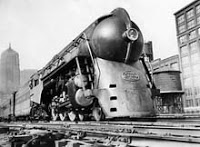
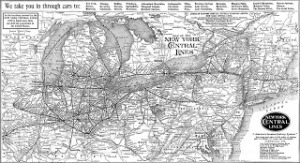
You can search our archive photo collection by following the instructions here on this site or by going directly to it at: https://nycshs.org/detailed-instructions-for-the-nycshs-archive-photo-and-valmap-website/
In what year did “New York Central Lines” change to “New York Central System”? How long did it take to change the name on locomotives and cars?
Thank you.
New York Central System was the name used after the 1935 consolidation. The lettering change was in the oval herald and leased/operated companies, i.e. P&LE passenger equipment was lettered New York Central System, unlike “regular” equipment which didn’t use “System” in the lettering.
Locomotives generally did not show “Lines” or “System” on their tenders, except in the case of the Peoria & Eastern and Pittsburgh & Lake Erie. Those subsidiaries had their locos repainted within six months (per lots of reviewed photos). Their passenger cars got their “System” lettering within a year, and freight cars got revised ovals during their normal repaints. Reefers were repainted most frequently, so one could say that their lettering was changed within three years, while some “Lines” box cars probably existed, in declining proportions, for twelve years. The lease frequently painted equipment, hopper and gons, probably carried “Lines” ovals for fifteen to twenty years.
I have a question about NYC passenger trains which operated between Columbus, Ohio and Charleston, West Virginia in 1950, I found a timetable which says the trains operated via the C & O Railway, This suggests these trains did not travel on the regular NYC lines via Corning, Ohio between Columbus and Charleston. Does anyone know the route the passenger trains used on the C & O? Also, were the passenger trains discontinued in 1950 or 1951 between Columbus and Charleston?
We will check into it for you.
Thanks, NYCSHS
The NYC discontinued passenger service between Columbus, OH and Charleston, WV on Friday, June 2, 1950. NYC passenger trains that operated on the C&O traveled down their mainline to Ashland, OH, crossed the Ohio River into Huntington, WV, then into Charleston. Hope this is helpful.
An update is coming to this.
NYC trains 5 (NB) & 6 (SB), operating between Columbus, OH and Charleston, WV, were discontinued on Friday, June 2, 1950. According to the NYC timetable dated April 30, 1950 (page 35), these trains operated on the C&O from Toledo to Columbus to Charleston. This is the route the the NYC trains would have taken on the C&O – Toledo to Columbus on the old Hocking Valley mainline: Toledo, Fostoria, Marion and Columbus. Columbus to Charleston on the C&O mainline: Columbus, Valley Crossing, Portsmouth, across the Ohio River to Limeville, KY, Ashland, KY, then into Huntington and Charleston, WV.
The discontinuance of service to Charleston via the T&OC as shown in the NYC timetables:
Sept. 26, 1948 – 2 trips each way Columbus to Charleston (1 morning & 1 afternoon)
Sept. 26, 1949 – 1 afternoon each way.
Dec. 11, 1949 – No Service
April 30, 1950 – 1 afternoon each way.
June 18, 1950 – No Service.
Copies of timetable pages are available if you send us your email address here.
email copies of timetables are appreciated. randybweiss@comcast.net. I have an avid interest in the railroads of Southeastern Ohio. I have found many photos of the B & O and C & O passenger trains at Athens, Ohio but no NYC trains.
Is there a book with all this info?
Do you mean about the NYC? If so, go to our online store, Collinwood Shop at: https://nycshs.3dcartstores.com/Books_c_20.html You will find many books about the railroad from several different sources there. They can be ordered from the store directly. Be sure to look at all of the “Sub-categories” listed in order to see all of the selections.
Where were the NYC heavy repair shops? Did they have a single large facility like Altoona for the PRR or Roanoke for the N&W?
I’m looking for drawings, blueprints or any technical information about the transfer table at the locomotive shop in St. Thomas, Ontario. I’ve looked high and low locally, but have come up with nothing. Any ideas? Thanks.
I am pretty sure we don’t have any. We really have no info on the Canadian sections of the NYCS. You might try https://groups.io/g/CanadaSouthern/topic/84989295